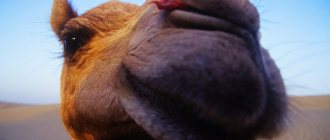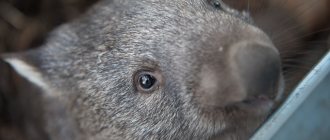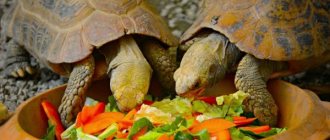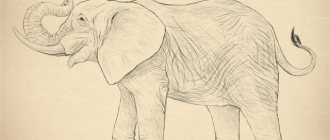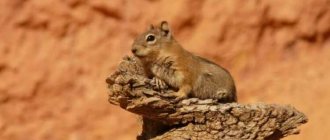Among the sands of the hot desert lives a beautiful, majestic animal - the camel. It's not called the ship of the desert for nothing. Since ancient times, people have noticed the camel's ability to easily move across the sands, withstand storms, drought and other harsh environmental conditions. People fell in love with the animal so much that it was domesticated and began to help in the household.
“God's gift” is how the name of the dromedary camel is translated from Arabic. The specific appearance of these animals delights visitors to zoos and circuses.
Appearance of a two-humped and one-humped camel
It is incorrect to believe that a two-humped camel differs from a one-humped camel only in the number of humps. There are a number of other external differences.
So, dromedaries are slimmer individuals. They are tall (2.5 meters) and have long slender legs, they weigh only 350-700 kilograms. In addition, their fur has an ash-yellow tint.
Another thing is the Bactrian camel, whose name is Bactrian. Their fur is thick and their height reaches 2.7 meters. Animals with two humps weigh up to 800 kilograms. The color is also different - in Bactrians it is gray-yellow.
Nevertheless, one-humped and two-humped camels have a large number of similar features, thanks to which they were included in a special order - Calloused. The point is the special structure of the foot, which allows them to walk unhindered on the sand.
When walking, a camel does not rely on its hoof, but on several phalanges of its toes, forming a unique cushion-callus. Camels have two such supporting toes. They are forked and in appearance resemble the hooves of artiodactyls.
Camels are also distinguished by their neck, which bends downwards.
Mouth
Our hero owes his “arrogant” appearance to his long muzzle with large forked lips. One Arabic tale says that when Allah rewarded a camel with a wife, it smiled so widely that its face cracked.
Photo: S. Taheri, wikipedia.org
The animal’s oral cavity is lined with a thick leathery lining, thanks to which the camel eats the toughest and prickly plants without risk (one is even nicknamed “camel thorn”). The camel is also not afraid of plants with a high salt content, which other desert inhabitants disdain.
Adaptability to harsh desert conditions
To feel great in dry, hot desert conditions, animals have a number of features. The main thing in the desert is to retain as much fluid as possible and overcome overheating. The long hair of camels is designed to combat overheating. The dromedary camel has less hair. Most likely, this is due to the fact that these animals do not occur in nature. Another thing is the two-humped camel. His coat is long (winter) or medium length (summer). But in any case, it is very dense and thick. This creates an excellent barrier for the camel that does not allow hot or cold air to pass through.
In the desert, the differences between day and night temperatures are very large - for this, camels have another unique property: a wide range of body temperatures. The animal can withstand temperatures from minus 35 to 40 degrees Celsius. If an ordinary mammal, at a constant permissible body temperature, turns on the mechanisms of thermoregulation with a slight change in it, then the camel turns on these mechanisms (sweating) only at temperatures above 40 degrees. This not only creates comfort for the animal, but also helps retain precious moisture.
The animal's specific nostrils also help prevent wasting water reserves and conserving it.
They have a slot-like shape and close very tightly. In addition, a special partition in the nasal cavity accumulates steam, condenses it and directs it into the oral cavity. This way, not a drop of water is wasted.
The special design of the nostrils performs another important function - they help the camel to breathe during a sandstorm. And large eyelashes protect the eyes from grains of sand getting there.
The kidneys and intestines help retain moisture. The former produce very concentrated urine, while the latter produces dehydrated manure.
How do camels accumulate moisture? Animals can absorb water phenomenally quickly: in 10 minutes up to 150 liters. Life-giving moisture accumulates in the stomach. In the heat, camels may not feel thirsty for up to 5 days, and a dromedary camel - up to 10, if it does not perform hard physical work. This unique feature is provided to animals by the special structure of red blood cells - they have an oval shape, and therefore retain moisture longer.
Digestive and urinary systems
Once upon a time, scientists assumed that it is in its stomach that a camel stores water reserves for a “rainy day.” Like, in a critical situation, a person can even quench his thirst from this stomach.
J. Wagner “Africa: heaven and hell for animals”: This version has long been refuted. Anyone who has ever been present at the slaughter and dressing of a camel knows that its stomach contains less liquid than that of a cow and other ruminant animals. This mushy contents, of course, can be strained through a linen rag, but the resulting liquid will contain the same amount of salt as in the blood. A person must really be on the verge of death to decide to use this greenish, putrid-smelling “drink.”
But the camel’s intestines have special cells that are capable of absorbing all the water entering the body. Because of this, camel feces are so dry that a Bedouin can immediately light a stove with it.
Camel urine is similar to feces - thick, like syrup, and practically devoid of urea. The fact is that camel kidneys not only absorb water to the maximum, but also recycle urine, absorbing nitrogen from it - a valuable material for protein synthesis.
Why does a camel have a hump?
A distinctive feature by which even children can easily recognize a camel is its hump. It is a mistake to believe that it contains a supply of water. No. Adipose tissue is concentrated in the hump - it contains nutrients that the animal consumes when necessary as food or drink. After all, it is known that water is a by-product of the breakdown of fat.
It is interesting that the well-being of an animal is judged by its humps. If they stick up, the camel is in excellent physical shape. Otherwise, the humps sag or disappear completely.
Nar hybrid of dromedary and bactrian
The Nar is a viable Bactrian-Dromedary hybrid that is distinguished by its large back hump, long coat, good disposition and hardiness. The animal can only be obtained at home.
The bunks are divided into several types, depending on the crossing:
- Iner or Nar (depending on the country of receipt) a cross between a two-humped and one-humped camel,
- Zharbay is the result of crossing two Nars. It is less common, since individuals are often not viable,
- Kospak is a cross between a female Nara and a male Bactrian camel,
- Kez-Nar is a cross between females of the Cospak subspecies and males of Turkmen Bactrian camels,
- Kurt is a cross between females of the Kazakh subspecies of iners with two-humped males of the Kazakh breed,
- Kurt-Nar is a cross between females of the Kurt subspecies and males of the Kazakh breed of Bactrian camels.
Habitat of two-humped and one-humped camels
Previously, the wild Bactrian camel lived throughout Asia, but nowadays it can only be found in the Gobi Desert. Domesticated Bactrian is still found in many Asian countries, such as China, Turkmenistan, Pakistan, Mongolia, Kalmykia, and Kazakhstan. Since the 19th century, the Bactrian camel has been used even in Siberia. Accustomed to harsh climatic conditions, it is ideal for transporting goods.
The Bactrian camel is becoming increasingly rare in the desert. They are being actively domesticated.
The Arabian Peninsula and North Africa are the habitat of dromedary camels. In the wild, dromedaries are very rare. They do not have such a layer of wool as Bactrians, so they prefer warm climates. They can be found in Pakistan or India; dromedary camels also reach Turkmenistan. Dromedaries also liked Australia - they were brought there about a thousand years ago.
Features of character and lifestyle
Photo: Bactrian camel
Wild Bactrian camels have an aggressive and passionate character. They are quite smart and careful. Due to their frequent migration, they are patient and able to travel long distances. Pets are calmer, more often even apathetic, timid and stupid. In nature, camels live in small herds of 7-30 heads. The herd has a developed social structure. There is a leader - this is usually a large dominant male; during the rutting period, the leader is the only adult male in the herd; he protects the females and young animals. During standing, other adult males can also join the herd; they must obey the will of the leader.
Due to the fact that the bulk of the herd consists of young animals and females, the majority of the herd lives peacefully. The main battles occur between males, for the right to be the leader, and for the female. Male camels are extremely dangerous during the rut, both for humans and other animals. Quite often, adult males can live and migrate alone. Females always gather in herds to protect their offspring. Camels are active during the day. At night, camels sleep or chew cud. In bad weather, camels take refuge in caves, ravines, and at the foot of the mountains. During a sandstorm or hurricane, a camel can lie motionless for several days.
These animals can easily endure the summer heat and heat; camels walk calmly, while fanning themselves with their tail. During migration they cover long distances. In summer, representatives of this species go in search of lush greenery and water in the mountains, in winter they head towards the south.
Interesting fact: Despite the fact that camels live mainly in the desert, these animals can swim well. They are not afraid of water and can swim across bodies of water.
Camel lifestyle
The area where the two-humped camel lives (as well as the one-humped camel) is desert or semi-desert with low vegetation. They lead a predominantly sedentary lifestyle, although they can roam over impressive distances, because the territory of their territories is very vast. “Wandering a lot” - this is how “camel” is translated from the Old Church Slavonic language.
During the day, in the sweltering heat, the animals rest and lie down. They prefer to eat in the evening and morning. The usual walking speed of a camel is 10 km/h. If the animal is frightened, it can reach speeds of up to 30 km/h. It is worth noting that a camel can see danger at a kilometer distance.
They live in families. The number reaches 10 individuals. The family is headed by a male, with several females and cubs subordinate to him. There are males leading a solitary lifestyle. Camels are calm and calm animals. They do not waste energy on games and conflicts.
It is worth noting that camels are excellent swimmers.
The life expectancy of the animal is 40-50 years. The mating season occurs in autumn-winter. Moreover, males behave very aggressively at this time: they can attack domestic camels, lead away or kill females. The cub is born on average after a little over a year. Almost immediately the camel gets to his feet.
Until the age of one and a half years, the female mother feeds him with her nutritious, fatty milk. The baby camel stays with its mother until puberty (3-5 years).
Adult camels have practically no enemies, but baby camels are attacked by wolves.
Animals are known for their ability to spit when in danger. It is worth noting that the Bactrian camel most often spits at another individual. A person rarely gets it. Only when, in the opinion of the animal, danger comes from it. When a camel defends itself, it kicks, bites, and can trample with its front legs.
Desert ships
Camels are simply created for life in the desert! It is not for nothing that for many centuries they were the “ships of the desert” on which they transported cargo. Until now, no modern form of transport can compete with camels when it comes to conquering the desert.
In many countries the camel is a domestic animal, and in some it is sacred. These large and hardy mammals inspire admiration and respect. There are many legends and interesting facts about camels.
Despite their external attractiveness, they cannot be called handsome. But, nevertheless, the word “camel” translated from Arabic means “beauty”.
A competition is held annually in Abu Dhabi to choose the most beautiful camel. This takes into account not only appearance, but also behavior, breed, speed and much more. Winners increase in value. The most famous people buy them.
Many people are accustomed to believing that a camel needs a hump in order to store water in it. But this is a misconception. It contains fat that reduces high temperature throughout the body. In addition, it saves the animal from hunger.
It is also eaten by people. The hump contains a small amount of meat. It has a sour taste and is also slightly harsh, but among many people it is a delicacy and is not cheap.
Given the previous fact, an obvious question arises: why can camels go without water for quite a long time? The reason lies in the structure of their red blood cells.
Camels are the only animals that have oval-shaped red blood cells, allowing them to flow smoothly even after dehydration. For comparison, the red blood cells of people in a similar situation begin to collide.
The loss of even a quarter of the body's moisture is not dangerous for a camel, while for other mammals a loss of 15% is fatal. Thanks to this feature, camels are ideal animals for living in such difficult desert conditions.
Camels, like all living creatures, need rest. If the animal lies down to sleep or rest, then it is almost impossible to raise it to its feet.
We'll have to wait until he deigns to do it himself, otherwise you'll only anger him. When angry, a camel can spit, and not only with saliva.
The spit may contain some of the stomach contents, which smell very bad.
Despite the presence of humps, camels have straight spines, like all mammals. Their eyes are protected from sand and dust by long eyelashes, as well as a third eyelid.
Interesting facts about camels:
Kara-Kum candies are associated with a camel, which is depicted on the wrapper. In fact, in the Kara-Kum desert, nomadic Turkmens actually bred these animals, but they had one hump, and not two, as depicted on candy wrappers.
The flag of the Chelyabinsk region and the coat of arms of the city of Chelyabinsk itself are crowned with a camel. Why? After all, there are no camels in that area at all. It turns out that in the 19th century, Chelyabinsk, like many other cities, flourished due to trade, and a trade route ran through the city. Cargo was transported on camels. That's why people chose this animal as a symbol.
Many tribes in Kenya live in territories located far from civilization, in impassable places. Despite this, quite educated people live there. Mobile libraries were invented for them, and camels were the drivers, since this is the only way to “deliver” education to remote areas.
Camel milk is not only a tasty product, it is also used for cosmetic purposes. Masks are made from sour cream to protect the skin from sun rays and chapping.
Milk is also used for medical purposes to treat psoriasis, food allergies, and restore the immune system.
Today, Arab scientists are developing a formula for a drug based on camel milk against cancer.
Camels are truly unique and priceless animals. No wonder there is a legend that the stars in the sky are heavenly camels belonging to Allah.
Source: https://lubopitnie.ru/korabli-pustyini/
Wild and domestic camels
Unfortunately, camels are becoming less and less common in the wild. One-humped animals are not found in the natural environment at all, and the number of two-humped animals is only 1000 individuals, which live in special reserves. We talked about the name of the Bactrian camel, listed in the Red Book - it is Bactrian.
Having no enemies among the desert inhabitants, the camel is in danger due to human activity. On the one hand, animals are caught for domestication and domestication, and on the other, their habitats are destroyed.
Domestic camels are wayward, proud animals with a sense of self-esteem. They cannot tolerate cruelty or neglect. A camel will never get to its feet at the request of its owner unless it decides for itself that it has had a good rest. The camel will not allow herself to be milked by a stranger. This must be done by a specific person and exclusively in the presence of the baby camel. Despite difficult communication with humans, camels are very loyal animals, they become attached to a good owner, and are capable of learning and training.
Blood
If a person loses at least 12% of the fluid in the body, he will face inevitable death. With such dehydration, the blood becomes very thick and no longer properly carries oxygen. But a camel remains alive even with a loss of 25%, because its moisture leaves the body unevenly. The tissues of the body lose it first, so the blood does not thicken for a very long time. It’s not for nothing that an animal can resemble a dried-out skeleton, but at the same time be on the move.
The blood of callouseds has no analogues among mammals at all. If the rest of the brothers in the class have red blood cells - erythrocytes - have the shape of a concave disk, then in camels they are oval, like a melon. The fact is that a lot of water accumulates in camel blood, and this form of red blood cells helps them not burst from the so-called. osmotic pressure.
Benefits for humans
Man began domesticating camels quite a long time ago, almost 5 thousand years ago. In addition to physical assistance in transporting goods, animals provide valuable milk, high-quality leather, and warm fur. Even camel bone is used to make jewelry and household items for Bedouins. It’s not for nothing that animals are held in high esteem by those who breed them.
Many residents of tourist destination countries use camels to entertain visitors.
Without the participation of these hardy animals, trade in ancient times would not have taken place, and as a result, powerful civilizations would not have flourished. People would not have become acquainted with oriental spices or Chinese silk. Camels were also used in wars. By the way, there is still a camel regiment in India.
The camel also played a role in the development of North America. It was with the help of these animals that goods were transported. With the invention of the railroad, camels were moved out into the natural desert environment as unnecessary, where they were destroyed by local farmers. That's why there are no animals left in America.
Social structure and reproduction
Photo: Bactrian camel calf
Camels, both male and female, reach maturity by 3-5 years. The mating season for camels falls in autumn. At this time, animals feel good, and females have the resources to bear healthy offspring. During the rut, males are especially aggressive. Skirmishes constantly occur between males, and sometimes males may try to mate with other males. The males begin to rush around madly, attack others, and make loud noises.
The leaders of the herd herd the females into one place and do not allow them to disperse. During the rut, males are extremely dangerous. They can attack both humans and other animals. During the rut, both males and females mark their territory with urine; for the same purposes, males also use the occipital glands, touching stones with their heads. During mating games, the female lets the male know that she is ready to mate by lying down in front of him and bending all four legs.
Camels mate while lying down. During mating, males grind their teeth and foam at the mouth. Pregnancy in a female camel lasts 13 months. A baby camel is born weighing from 30 to 45 kilograms. Newborn camel calves immediately stand well on their feet, and almost immediately after birth they can follow their mother. Camel calves have the rudiments of humps, which do not yet contain fat reserves, however, in the second month of life, the humps rise.
The female feeds the cubs up to 1.5 years. Of these, up to 4 months, the baby camel’s diet consists exclusively of mother’s milk, after which the cubs begin to get used to plant foods, grass, and shrubs. A female can give birth several times a year, and there are cases where a female feeds several of her older and younger cubs at the same time. Females protect their offspring, protecting their own and others’ cubs from other animals.
Why do camels spit at people?
Camels spit at everyone: their relatives, people, and sometimes even predators. ... Camels are ruminant animals, that is, they chew “rumination”, partially “digested” in the stomach and regurgitated plant food. Therefore, spit is a mixture of chewed food and saliva, which has an unpleasant odor.
Interesting materials:
Is it possible to record a telephone conversation using a voice recorder? Is it possible to use power from an outlet? Is it possible to run a wash without powder? Can Apple Watch be charged wirelessly? Is it possible to charge a solar panel through glass? Is it possible to brew herbs that have expired? Is it possible to get yourself a squirrel? Is it okay to yawn in public? Can I fry with unrefined olive oil? Can you fry steak in coconut oil?
